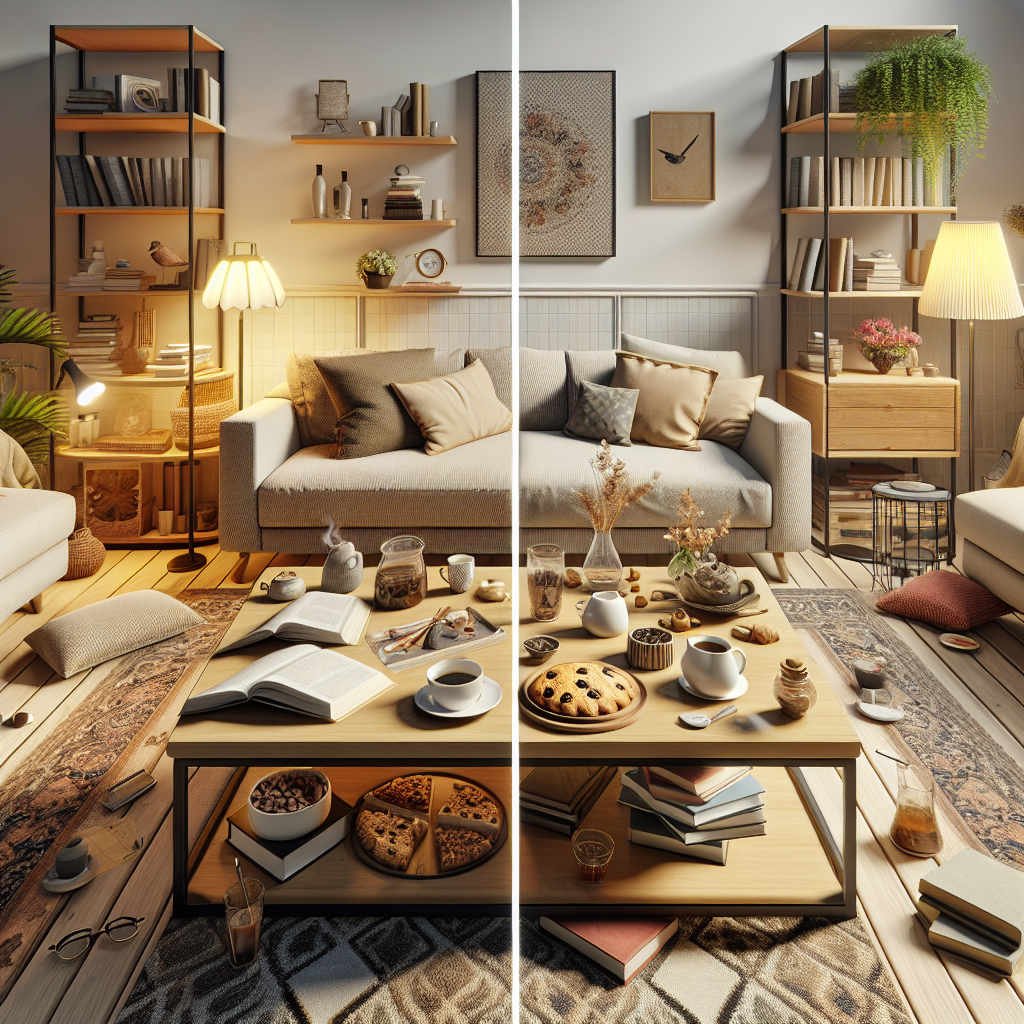Introduction
Picture this: a cozy evening, the aroma of freshly brewed coffee wafting through the air, and you settle down on your couch to unwind. But wait, what’s that piece of furniture holding your steaming cup of delight? It’s the ubiquitous coffee table, a staple in living rooms across America. But did you know that a coffee table goes by many names? Let’s embark on a journey to uncover the different aliases and fascinating history of this essential piece of furniture.
Table of Contents
- The Evolution of the Coffee Table
- Different Names for the Coffee Table
- Styles and Designs of Coffee Tables
- Choosing the Right Coffee Table for Your Space
- Key Takeaways
- FAQs
- Conclusion
The Evolution of the Coffee Table
The coffee table, as we know it today, has evolved significantly over the years. Originating from ancient times when low tables were used in Egyptian and Roman households, these tables have always served as functional and decorative elements. The modern concept of the coffee table became popular in the late 19th century during the Victorian era, where it was primarily used for serving tea. Interestingly, this piece of furniture transitioned from being called a “tea table” to a “coffee table” as coffee gained popularity over tea in Western cultures.
Different Names for the Coffee Table
Just like an actor with multiple roles, the coffee table dons various names depending on its use and style. Here are a few:
- Tea Table: As mentioned earlier, historically used for serving tea.
- Cocktail Table: Often used interchangeably with coffee table, especially in settings where cocktails are served.
- Center Table: Positioned at the center of a room’s seating arrangement.
- Occasional Table: Used occasionally for specific purposes, such as holding drinks or snacks.
Styles and Designs of Coffee Tables
Coffee tables come in myriad styles and designs, each adding a unique flair to your living space. Whether you prefer a rustic charm or modern minimalism, there’s a coffee table to suit every taste. Here are some popular styles:
Modern Coffee Tables
Sleek and sophisticated, modern coffee tables often feature clean lines and minimalist designs. Materials like glass, metal, and polished wood are commonly used. These tables are perfect for contemporary homes looking to make a chic statement.
Rustic Coffee Tables
If you’re drawn to the warmth of natural materials and earthy tones, a rustic coffee table might be your ideal choice. These tables often feature reclaimed wood and distressed finishes, adding a cozy and inviting vibe to any room.
Traditional Coffee Tables
For those who appreciate classic elegance, traditional coffee tables offer timeless appeal. Intricate carvings, rich wood tones, and ornate details characterize these pieces, making them perfect for formal living spaces.
Choosing the Right Coffee Table for Your Space
Selecting the perfect coffee table involves more than just aesthetics. Consider factors such as size, functionality, and how well it complements your existing decor. A well-chosen coffee table can tie together your seating area and serve as a focal point in your room.
For instance, if you often entertain guests, a multi-functional table with storage options could be beneficial. Alternatively, if you have limited space, opt for a compact design that doesn’t overwhelm the room.
Key Takeaways
- The coffee table has evolved from ancient low tables to modern multifunctional pieces.
- It goes by various names such as tea table, cocktail table, center table, and occasional table.
- Coffee tables come in diverse styles including modern, rustic, and traditional.
- Choosing the right coffee table involves considering size, functionality, and design compatibility with your space.
FAQs
What is another name for a coffee table?
A coffee table is also known as a tea table, cocktail table, center table, or occasional table.
How do I choose the right coffee table for my living room?
Consider the size of your space, the functionality you need (e.g., storage), and how well it matches your existing decor.
Are there health concerns related to coffee consumption?
For more information on this topic, check out our article on potential health effects of coffee.
Conclusion
The humble coffee table is more than just a surface to place your cup; it’s a centerpiece that brings your living space together. Whether you call it a tea table or an occasional table, its role remains undeniably significant. Choose wisely, and let your coffee table reflect your style and personality while serving its practical purpose.
Dive deeper into the world of coffee and its related nuances by exploring topics like cold brew coffee preparation, or discover if coffee affects your liver health. Your journey into understanding this beloved beverage and its paraphernalia has only just begun!








